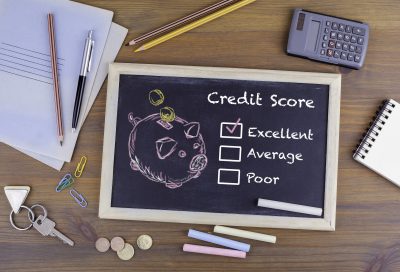Quick Look
- Credit card debt consolidation takes revolving balances from multiple cards and puts them into a single loan or line of credit. It should have a lower average interest rate (which saves you money), and a single payment.
- If you decide consolidating makes sense for you, you’ll need to add the Credit Card Consolidation Checklist to your MoneySwell plan and follow those steps.
- Add up all your credit card debt
- Use MoneySwell’s Budget Planner to determine how much you can afford to put toward paying it off
- Use a debt payoff calculator to determine how long it will take to pay it off
- Compare cards based on interest rate(s) and possible fees
- Sign up for a card
- Transfer your balance
- Use MoneySwell’s Budget Planner and Assets & Liabilities tools to track your progress
Debt consolidation may sound like a scary topic but it’s actually fairly straightforward. Done right, it can save you a lot of money. By the end of this article you’ll have a clear idea of what it is and if it makes sense for you.
What is debt consolidation?

If you like the idea of a single payment, and the numbers and your own psychology line up, consolidation may be a good idea for you.
Consolidation is just the idea of grouping things together to eliminate inefficiency. When you have credit card debt from multiple sources, you’re grouping those sources so you can eliminate the inefficiencies like keeping track of multiple interest rates, multiple payments, and multiple payment due dates.
Debt Consolidation Methods
Whatever the method of consolidation, the process involves taking out a new loan, using that loan to immediately pay off all your other credit card debts, and then paying back that new loan back over time. Here are some common ways that is done.
- Balance Transfer Cards – In this scenario you actually open up a new credit card and move the balance from your other cards to this new card. You will be offered what is known as an introductory or “promotional” interest rate that will last for 12-24 months before it’s set to jump up to a higher rate. Your goals are to find a card that:
-
- Doesn’t charge a one time fee for paying off your old balances (known as a “Balance Transfer Fee”)
-
- Has the lowest possible introductory interest rate (0% if you have good or excellent credit)
-
- Has an introductory interest rate period that allows you to pay off as much debt as you can before the introductory rate ends.
If you’re able to secure a 0% balance transfer fee, a 0% interest rate, and pay off the entirety of the loan before the 0% interest rate expires, this is absolutely going to be your best option. Every penny you pay will go toward lowering your principal and not to interest you would otherwise be charged.
- Has an introductory interest rate period that allows you to pay off as much debt as you can before the introductory rate ends.
- Personal Loans – These are loans offered by banks or credit unions. Typically, you’ll be able to secure an interest rate with one of these loans that is substantially lower than the average interest rate across your credit cards (but make sure to confirm since your credit rating can affect this and some personal loans have quite high rates).
Typically the agreement of a Personal Loan will include a term period, the time you have to pay the loan back. Before taking out a personal loan, you’ll want to know that you can afford the monthly payments that will be required to pay back the loan on that schedule. (We’ll walk you through how to do this in the “Crunch Your Numbers” task.)
- Home Equity Loan – This is only something to do if you A) own your own home and B) have significant equity in your home (in other words the value of your home is substantially higher than the amount you owe on it). Importantly, this loan differs from the previous two in that you are taking on what is known as a “secured loan.” This means the loan is backed by collateral, in this case, your home. If you were to default on the loan, the lender can use that collateral to repay itself for the money it lent you.
The home equity loan will have a term length associated with it and you will almost certainly be able to secure a much lower interest rate than the average across your credit cards.
- Cash Out Home Refinance – Just like the home equity loan, you need to own a home and have equity in it for this option to make sense. As with all refinances, you will be starting a new mortgage (that will replace your old one) that you’ll pay off on a set term, typically 15 or 30 years. Additionally, just like a home equity loan you’ll be getting a lump sum of cash you will use to pay off your credit card debt. This lump sum cash payment will be rolled into your new mortgage.
Note that there can be significant closing costs associated with a refinance. Often, there is the option to roll those costs into the term of the loan so you don’t have to pay anything upfront. If your new interest rate is low enough, this can be a viable option.
- Other Options – There are other ways to help you reduce or get rid of credit card debt including raiding your retirement account (should be seen as a last resort) debt management plans (DMPs) offered by nonprofits, debt settlement plans (DSPs) offered by various third parties, or even bankruptcy. If you really feel like you have no other options these are worth looking into. But beware they may involve other sacrifices including penalties on removing retirement account money, a temporary inability to open new credit accounts with DMPs (not necessarily a bad thing), and varying impacts to your credit score in the case of DMPs and DSPs.
Credit Card Consolidation Example
Let’s walk through an example showing how consolidating your debt could save you money. For simplicity, we’ll pretend we’re doing the balance transfer card method (described above). But regardless of method, the basic concepts still apply.
| Before Consolidation | After Consolidation |
|
Note: In this example, even if the best interest rate you’re able to secure is 3%, by paying only $14 more per month ($847), you would still be able to pay off the loan in 12 months and only pay $161.14 in total interest. Not bad! |
When you’re ready to try this with your numbers, we recommend this debt payoff calculator from Bankrate.com.
Personal Factors Affecting Debt Consolidation
Debt consolidation isn’t just mathematical. Your individual credit score and your personal psychology matter too.
- Credit Score: In the Foundations tier, we’ve covered what a credit score is, the factors that impact it, and how to check it. And when it comes to debt consolidation, your credit score matters. To secure a 0% balance transfer fee and a 0% introductory interest rate, you’ll likely need a credit score approaching the mid 700’s or better.

It’s certainly possible to have high-interest debt and also have a good credit score. But if you’re not there yet, focus on on-time payments and other factors to improve your score.
As described in the example above, you can still save a lot of money with a low but not 0% interest rate. But just be aware of how long your low introductory interest rate is meant to last and what it will jump up to after that period ends.
- Psychology: When you choose to consolidate, you are opening a new loan or a new line of credit. Therefore, it’s important to ask yourself: Do I have the discipline to use this new loan to pay off old loans and also not to acquire new debts on this new line of credit? If you find yourself hesitating for even for a second, consolidation might not be a good choice for you. You may end up taking on even more debt and making your situation worse.
Another question to ask yourself: Do I have the ability and discipline to pay my new loan off before or soon after my introductory interest rate ends (or by the end of the loan term)? It’s important to be realistic about what you can afford. We’ll show you exactly how to calculate your numbers in the next steps.
For a balance transfer card, if you think it may take you longer than the period your introductory interest rate will last, but your new interest rate won’t be any higher than the average of what you’re paying now, you won’t be worse off (assuming you don’t take on new debt). But don’t forget: the more you are able to pay down while your interest rate is low, the more you’ll save.
For loans with specific term lengths (e.g. a personal loan), the required payoff date may be part of your loan agreement so you’ll want to be really confident you can hold up your end of the bargain. - Pro Tip – Debit Cards: If you believe you can meet your needs with your income but tend to have a habit of buying things you want on credit, consider only using debit cards while you pay down your credit debts. Cut up your physical cards (you can always get new ones when you need them) and take them out of your mobile wallets or automatic payments for any subscriptions you have. This will ensure you don’t add new credit debt to what you’re trying to pay off.
Ready to Consolidate?
If you’ve read all the above and it sounds like consolidation is a good idea for you, continue with the Debt Consolidation Checklist in your MoneySwell plan (available to logged in users).